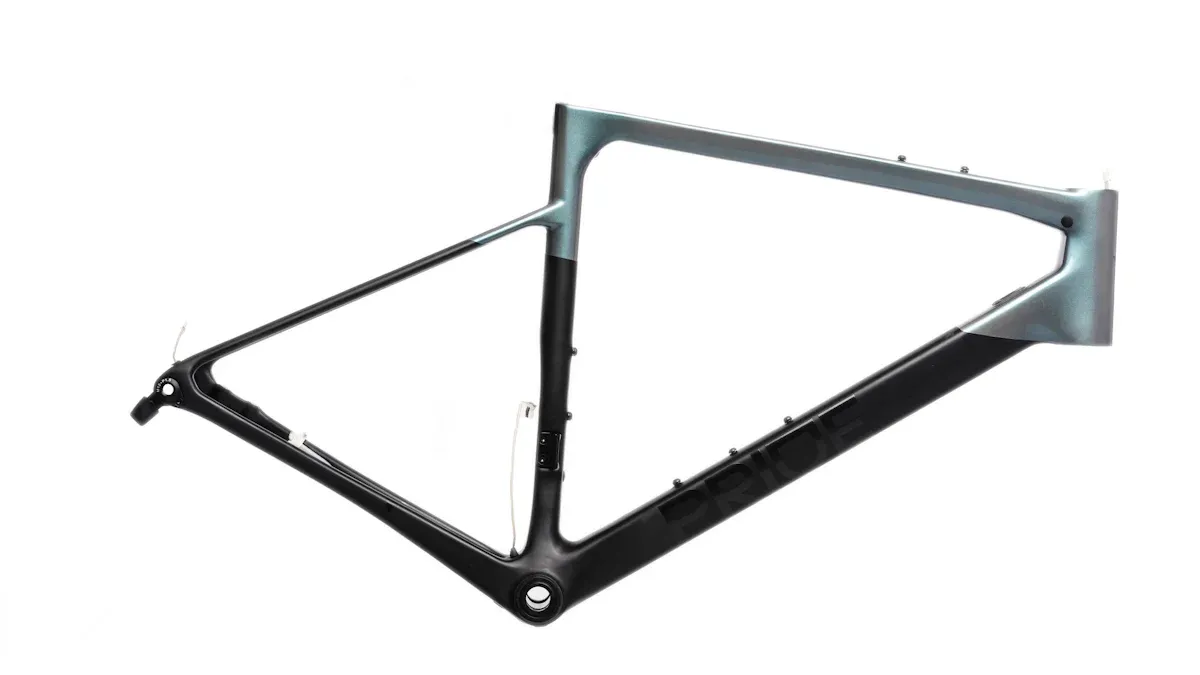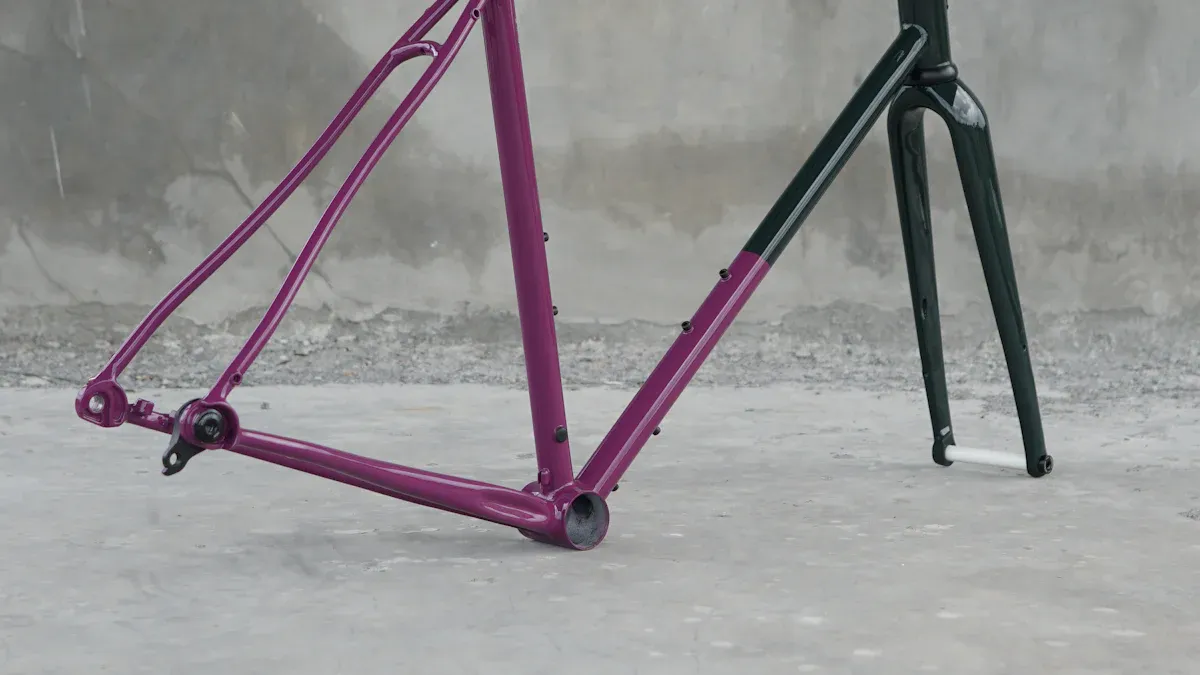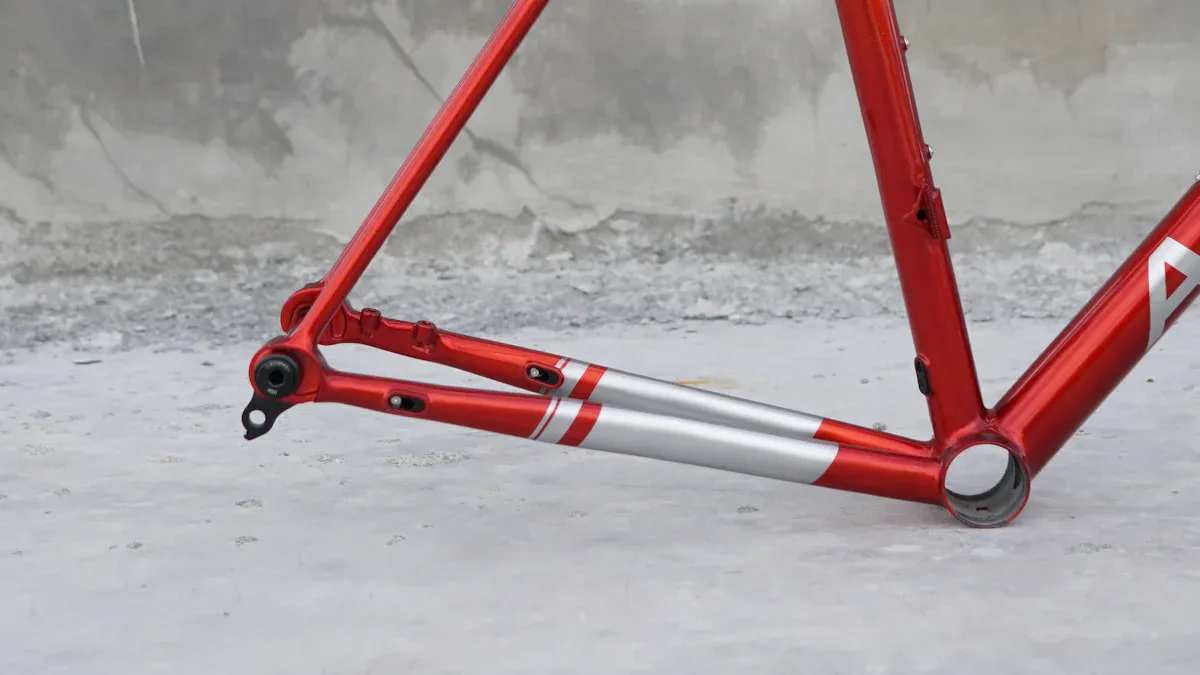
When you adjust bike frames, a cold set bike frame is very important. Many cyclists use this method for different reasons. You might have frame alignment problems. These can cause shifting issues and make riding uncomfortable. You may also need to change an old frame to fit new parts, like a 9-speed groupset. Additionally, worries about misaligned dropouts hurting performance often come up. A cold set bike frame can help, but you should think about the good and bad sides before deciding if it’s right for you.
Key Takeaways
Cold setting helps your bike fit better. It changes the rear dropout spacing. This lets new wheels fit older frames.
Cold setting can make your ride better. It can reduce pain and tiredness while riding.
Be careful of risks. Cold setting might weaken the frame. It can also cause misalignment.
After cold setting, check your bike’s frame often. Look for cracks and make sure it is aligned. This keeps you safe and helps performance.
If you need big changes, get professional help. This can stop you from damaging your bike frame.
Advantages of Cold Setting

Improved Fit
When you cold set a bike frame, it helps your wheels fit better. This is really helpful if you have an old bike or are doing a DIY project. Many older bike frames were not made for today’s wheel sizes, which need more space. By cold setting, you can change the spacing of the rear dropouts to fit these new hubs.
Cold setting lets you create a spacing of 135mm. This size is common for modern road and mountain bikes with many gears.
You can even make a frame alignment gauge. This helps keep your dropouts parallel after you adjust them.
This better fit makes it easier to put your wheels back on. It also improves your riding experience. You will feel more comfortable and have better handling, especially if you had problems with misalignment.
Performance Enhancements
Cold setting can also improve how your bike performs. Many cyclists say they feel more comfortable and have less pain after adjusting their bike frames. Here’s a quick look at how cold setting can change your ride:
Subjective Measure | Before Adjustment | After Adjustment (30 days) |
|---|---|---|
Comfort | Higher levels | |
Pain | Higher levels | Significant decrease |
Fatigue | Higher levels | Significant decrease |
As you can see, cold setting helps more than just fitting new parts. You might notice your bike feels more responsive and stable. This allows you to ride longer distances without discomfort. This is especially important for vintage bike owners who want to keep their bike frame materials strong while enjoying modern performance.
Disadvantages of Cold Setting

Potential Risks
Cold setting has benefits, but it also has risks. When you change your bike frame, you might face problems that can affect your ride. Here are some common risks of cold setting:
Structural Integrity: Cold setting can weaken your frame, especially at the joints. If these connections are weak or cracked, your frame could fail.
Misalignment: This process can cause your frame to be misaligned. This may lead to handling problems, especially in titanium and steel frames where stress builds up.
Bending: Thinner tubes with larger diameters bend more easily. This “beer can” effect can make your frame less stable while riding.
To lower these risks, make sure to align everything carefully during cold setting. Take your time and check your adjustments.
Frame Integrity Concerns
After cold setting, watch for your bike’s frame integrity. Here are some important checks to do:
Look for cracks, dents, or rust, especially near welds and joints.
Use a flashlight to spot small details that might be hidden.
Tap the frame with a hard object and listen; a dull sound may mean hidden damage.
Check if the wheels are aligned straight and not rubbing against the frame.
Flex the bike gently to see if anything feels loose or weak.
If you made big changes, think about having a professional check for safety. This extra step can help prevent accidents later on.
Changing your bike frame with cold setting can really help, but it has some problems too. Here’s a quick summary of what to think about:
Adjustment Size: If you need a big change, get expert help.
Alignment is Key: Make sure your dropouts are straight both ways.
Chain-Ring Clearance: Look for space on the drive-side chainstay to prevent issues.
In the end, think about these points based on what you need. Cold setting can improve your ride, but be careful when doing it. Enjoy cycling! 🚴♂️
FAQ
What is cold setting in bike frames?
Cold setting is a way to change the space of a bike frame’s rear dropouts. This helps fix frame alignment. It also lets you put modern wheels on older bikes.
How does cold setting affect frame alignment?
Cold setting can make frame alignment better by changing the space between the dropouts. This change helps your wheels fit right, making your ride more enjoyable.
Can I cold set my bike frame myself?
Yes, you can cold set your bike frame at home. Just be sure to use the right methods to avoid hurting the frame. If you are not sure, ask a professional repair shop for help.
What materials are best for cold setting?
Steel frames work well with cold setting because they are flexible. Aluminum and carbon frames might not work as well, so be careful when using these materials.
How often should I check my bike’s frame alignment?
You should check your bike’s frame alignment often, especially after repairs or changes. Keeping track of alignment helps keep your bike safe and working well.
See Also
Evaluating Durability: Aluminum Bike Frames Pros and Cons
Distinguishing Features of Fat and Mountain Bike Frames
A Buyer’s Guide to Carbon, Aluminum, and Steel Frames
